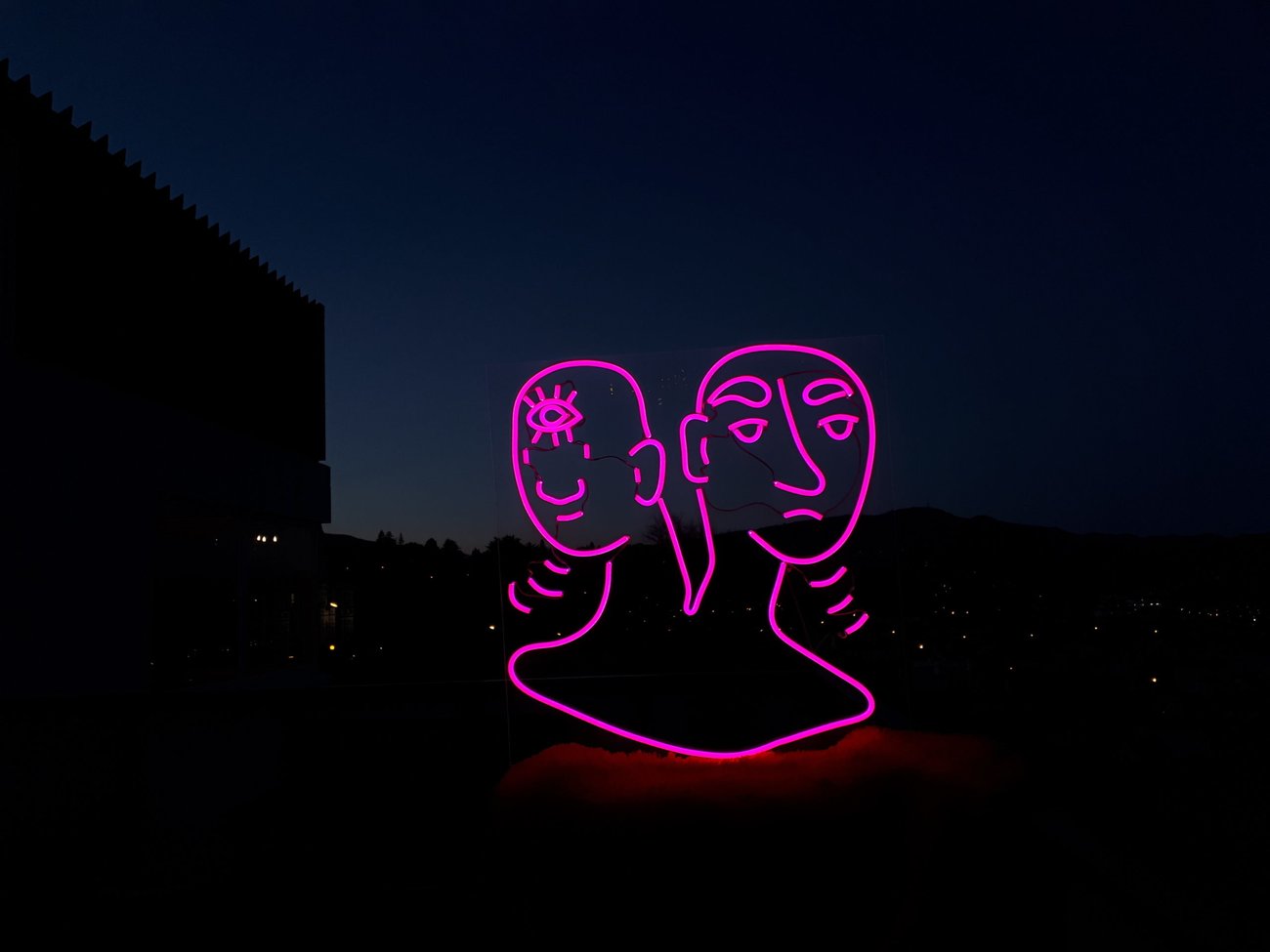
So, how does one get into the niche business of neon lights? Henriquez previously worked in the film industry in production, while O’Leary is an art school graduate who spent the last six years working in tech developing apps, but she says she has had a tremendous amount of love for neon lights since her teens.
“I always thought I’d open a daggy old tavern and its name would become whatever old second-hand, washed-up neon business sign I could get my hands on,” she says.
“Real deal traditional glass neon is expensive – and so it should be, the amount of hours, skill and love that go into real glass neon is worth paying for, though, we’ve just never had the money for it.
“We came across the LED neon flex product and saw how it was being used for signs that looked like neon, and so we just ordered lots of different varieties and started making stuff! People liked them, and so up popped Glowjob, and we’ve made over 60 glowies since.”

Michael Henriquez and Bridie O’Leary
And with a playful business name to boot, it bears mentioning. O’Leary says they came up with it because neon reminds them of dirty dive bars and dodgy businesses with half-broken, buzzing signs.
“In saying that, though, our glowies are very charming pieces of art, rather than mass-produced designs that you can buy off the shelf from China,” she says.
“And people do get our name muddled up from time to time. We haven’t made any naughty glowies yet, but if someone has a dirty glowie request, we will absolutely make it for them.”

Inspiration for the lights also comes from the pair’s living environment. O’Leary says they live in a 40 square metre ‘70s-style apartment in Dunedin, which has “terrible lighting, awful concrete block walls and not a lot of room for extra clutter”.
However, through the use of floor lamps and indoor glowies they’ve designed, they’ve solved this problem.
So, what’s the design process like for one of their glowing creations? Time consuming, but satisfying, in O’Leary’s words.
Glowjob needs to know exactly how long each piece of LED neon needs to be for each part of the design, so a design is drawn up on the computer calculating all the lengths of the linework, then printed out full size with notes of where the cables need to go and used as a guide.
“It’s sort of like a map… at this point you can pretty much turn into a glowie robot and listen to heaps of cool crime podcasts and music and four to eight hours later, you’re all finished. Very rewarding work for certain,” O’Leary says.

She says the company also loves collaborating on designs with artists and often makes connections with them via Instagram.
“Whether it’s us contracting artists we love to draw up sets of designs we want or working directly on something of their own, it’s always so much fun. We will always be working with artists to ensure our pieces are fresh, lovable, and of course, all original.”
Glowjob is yet to launch an official site, as O’Leary says there are a few kinks to iron out first.
The business has faced a few challenges in finding a consistent supplier for its materials, but is close to solving the issue. Once everything is in place, an online shop will be launched offering original Glowjob designs and some collaborations it has done with artists.

Its glowies will be available in a variety of sizes, ranging between $500 to $1500. There’ll also be limited edition runs to ensure the pieces are unique.
And once this is all up-and-running, a real-life gallery could also be on the cards.
“Ideally, we would love to open our own gallery, which would be more like a super-dive of a tavern or bar displaying all the glowie goodness, which of course would be available to purchase,” O’Leary says.
“That’s the dream.”





